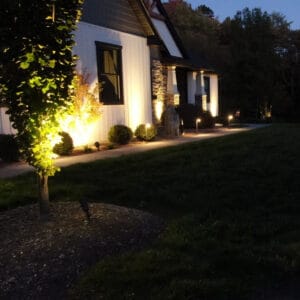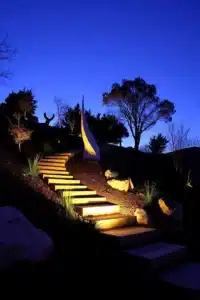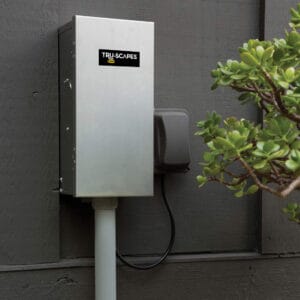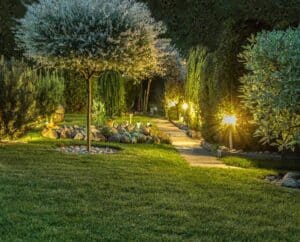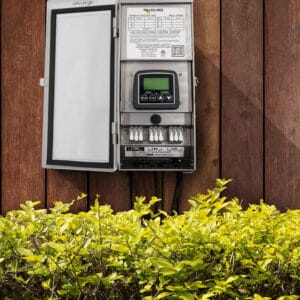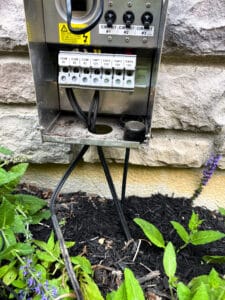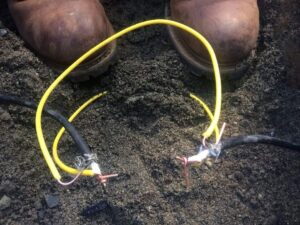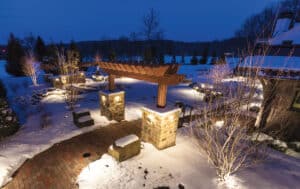That profound sigh of relief when a major storm passes and your home is still standing is a feeling you can’t quite describe. The wind subsides, the rain stops, and a cautious calm returns. But as you step outside to survey your property, your heart sinks a little. Your once elegant landscape lighting, which provided such warmth and security, is now scattered, damaged, or completely dark. For homeowners in coastal regions and storm-prone areas, this is an all-too-common and dispiriting reality. Investing your hard-earned money into your home’s curb appeal only to see it washed away or destroyed is frustrating, costly, and emotionally draining.
So, what’s the solution? Do you simply give up on having a beautifully lit landscape? Absolutely not. The answer lies in making smarter, more resilient choices from the start. You need a lighting system that’s as tough as it is beautiful, engineered not just to survive, but to thrive in harsh weather. This article is your complete, in-depth guide to choosing, installing, and maintaining weather resistant landscape lighting that can stand up to the brute force of hurricanes and severe storms. You’ll gain a deep understanding of the best materials, what critical features to look for in a fixture, and how to properly protect your investment for years of reliable, brilliant performance.
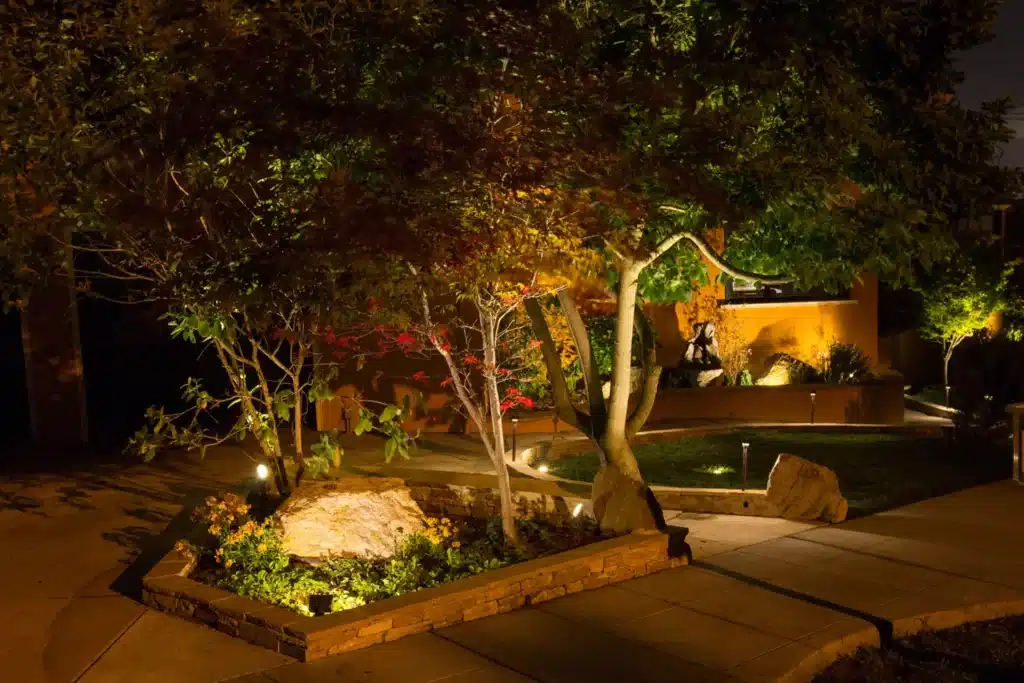
Why Your Choice of Landscape Lighting Matters More Than You Think
When hurricane-force winds and torrential, driving rain hit your property, the budget-friendly, big-box-store outdoor lights don’t stand a chance. Their thin metal or plastic construction can easily bend, crack, or be ripped from the ground, turning them into dangerous projectiles that can damage your home’s siding, break windows, or harm neighboring properties. Furthermore, their inadequate seals allow water to penetrate, leading to short circuits, system-wide failures, and significant electrical hazards. This isn’t just about aesthetics being ruined; it’s about the fundamental safety and security of your home being compromised.
Choosing high-quality, durable, storm-proof outdoor lights provides an invaluable sense of peace of mind. These robust systems are specifically engineered to withstand the elements, ensuring your pathways, driveway, decks, and outdoor living spaces remain safely and reliably illuminated, no matter what the weather throws at you. This consistent illumination is a powerful deterrent to potential intruders who might try to take advantage of a storm’s aftermath and widespread power outages. Beyond the immediate security benefits, you’ll also save a significant amount of money in the long run. By following the “buy it once, buy it right” philosophy, you avoid the recurring cycle of replacing and repairing flimsy fixtures season after season. A well-built system is a lasting addition to your home’s value, not a recurring expense.
The Anatomy of a Hurricane-Proof Light Fixture: A Deep Dive
Not all landscape lights are created equal—far from it. When you’re searching for fixtures that can confidently weather a storm, a few key engineering and material characteristics separate the contenders from the pretenders. Let’s break down what truly makes a light fixture resilient.
Material Matters: Choosing the Right Armor for Your Lights
The material composition of your light fixtures is your absolute first line of defense. It’s what protects the sensitive internal components from physical impact, corrosive salt-laden air, and constant moisture. Here’s a more detailed look at the top contenders for durable landscape lights and why they perform so well:
| Material | Pros | Cons |
| Brass | Naturally corrosion-proof due to its copper/zinc alloy. Weathers to a beautiful, dark, and stable patina. Extremely durable and heavy, providing excellent stability in high winds. | Higher initial investment, but exceptional long-term value. |
| Marine-Grade Stainless Steel (316) | Contains molybdenum, making it exceptionally resistant to corrosion from salt and chlorides. Incredibly strong, resisting dents and impacts. Offers a sleek, modern aesthetic. | Can be more expensive than other options and may show water spots if not maintained. |
| Copper | Develops a unique and highly desirable blue-green patina (verdigris) over time, which acts as a protective layer. Very durable and offers timeless elegance. | As a softer metal, it can be more susceptible to dents from heavy impacts compared to brass or steel. |
| Powder-Coated Aluminum | A durable polyester powder is electrostatically applied and cured under heat, creating a finish much tougher than paint. It’s lightweight and resists corrosion well, as long as the coating remains intact. | If the coating is deeply scratched or chipped, the aluminum underneath can be exposed to the elements and begin to corrode. |
For the ultimate in hurricane lighting protection, solid brass and marine-grade 316 stainless steel are the undisputed champions. Their inherent strength, substantial weight, and superior resistance to the corrosive effects of coastal air make them the wisest long-term investment for any homeowner in a storm-prone region.
Beyond the Metal: Lenses, Gaskets, and Seals
A fixture’s body can be solid brass, but if its seals fail, the light is useless. The lens and gaskets are critical components that are often overlooked.
- Lenses: Look for fixtures with thick, tempered, or heat-resistant glass lenses. These are far superior to the cheap plastic or acrylic lenses found on low-quality lights, which can quickly turn yellow, become brittle from UV exposure, and crack under the stress of changing temperatures or impact from small debris. A clear, resilient glass lens ensures a consistent and pure light output for years.
- Gaskets: The humble gasket is what creates the watertight seal between the fixture’s body and the lens. High-quality fixtures use durable, high-temperature silicone or rubber O-rings. These materials remain flexible and effective across a wide range of temperatures and won’t compress or degrade over time. Avoid fixtures that use cheap foam gaskets, as they quickly lose their shape and sealing ability, creating a primary entry point for moisture.
Understanding IP Ratings: The Weatherproofing Scorecard
Have you ever seen a rating like “IP65” on a product and wondered what it means? The Ingress Protection (IP) rating is a standardized, universal system that is crucial for understanding how well a fixture is sealed against the intrusion of both solid objects and water.
- The first digit (rated from 0-6) tells you its level of protection against solids like dust, dirt, and debris. A “6” is the highest rating, meaning the fixture is completely dust-tight.
- The second digit (rated from 0-8) tells you its level of protection against water. This is the number you should really focus on for storm-proofing.
For truly weather resistant landscape lighting, you should look for a minimum rating of IP65. This ensures the fixture can withstand powerful jets of water from any direction—think wind-driven rain. For fixtures in low-lying areas that might experience temporary flooding or puddling, an IP67 rating is even better. This certifies that the fixture can be fully submerged in up to one meter of water for 30 minutes without any leakage.
Best Practices for a Fortress-Like Installation
Even the most robust, heavy-duty landscape lights can fail if they do not receive professional landscape lighting installation. The installation technique is just as important as the fixture itself in creating a system that can withstand high winds and deluges of rain.
- Secure Mounting and Foundations: Fixtures must be anchored securely. For path lights, this means using heavy-duty, long stakes driven deep into compacted soil. In softer soil, a concrete footing may be necessary to prevent leaning or uprooting. For lights mounted on walls, decks, or pillars, use high-quality stainless steel hardware that won’t rust and fail.
- Protect Your Wires: Always use direct-burial rated cable for your low-voltage lighting. This cable should be buried at least 6 inches deep to protect it from being snagged, pulled up by shifting soil, or damaged by flying debris or post-storm cleanup efforts. In high-traffic areas or rocky soil, running the wire through a conduit provides an extra layer of invaluable protection.
- Waterproof Connections are Non-Negotiable: This is the number one point of failure in most landscape lighting systems. Do not use simple electrical tape or non-waterproof wire nuts. Invest in high-quality, gel-filled waterproof wire connectors. These connectors encase the wire splice in a silicone gel that completely blocks out moisture, preventing corrosion and short-circuiting for the life of the system.
- Elevate Your Transformer: The transformer is the heart of your low-voltage lighting system. Never let it sit directly on the ground where it can be submerged in water. It should be securely mounted to a wall or post at least 12 inches above the ground. Placing it on a small concrete paver block is another excellent strategy to keep it safe from ground flooding.
- Consider Drainage: When positioning your lights, especially in-ground well lights, pay attention to the landscape’s natural drainage. Avoid placing fixtures in low spots where water will inevitably pool. Proper drainage around the fixture prevents it from sitting in corrosive standing water for extended periods.
Proactive Protection: Preparing Your Lighting for a Hurricane
If you have advanced warning that a hurricane or major storm is on the way, taking a few proactive steps can make a huge difference in protecting your investment.
- Inspect and Tighten: Take a walk around your property and physically check every fixture. Wiggle them to ensure they are secure in the ground. Tighten any loose mounting screws on deck or wall lights.
- Trim Your Trees and Shrubs: Prune any dead or weak tree branches that are hanging over your lighting fixtures or wiring paths. High winds can easily snap these branches, causing significant impact damage.
- Document Everything: Take clear photos and a quick video of your entire landscape lighting setup before the storm. This documentation can be invaluable for insurance purposes if you need to file a claim for damages.
- Power Down: Before the storm hits, shut off the power to your landscape lighting transformer at the main circuit breaker panel in your home. This prevents the risk of power surges during the storm and electrical hazards if wires become damaged.
- Store What You Can: If you have decorative bistro-style string lights or other portable fixtures, it’s always best to take them down and store them safely indoors.
After the Storm: A Cautious Post-Hurricane Checklist
Once the storm has passed and it is officially safe to go outside, it’s time to carefully assess your landscape lighting system.
- Wait for Safety: Do not rush outside. Wait until the storm has fully passed and there is no risk of falling debris or downed power lines. Never inspect your system while there is still standing water around it.
- Conduct a Thorough Visual Inspection: In the daylight, walk your entire property and closely inspect every component. Look for leaning path lights, soil erosion around the base of fixtures, cracked lenses, physical damage from debris, and—most importantly—any visible cuts or exposed wires.
- Check the Transformer: Before restoring power, open the transformer casing and check for any signs of water intrusion, insects, or physical damage. If it looks compromised in any way, do not turn it on.
- Know When to Call a Professional: If you see any frayed or exposed wires, if your transformer is damaged, if multiple lights are not working after you safely restore power, or if you simply feel unsure about the system’s integrity, do not take any risks. It’s time to find a qualified landscape lighting professional to diagnose and safely repair the issue.
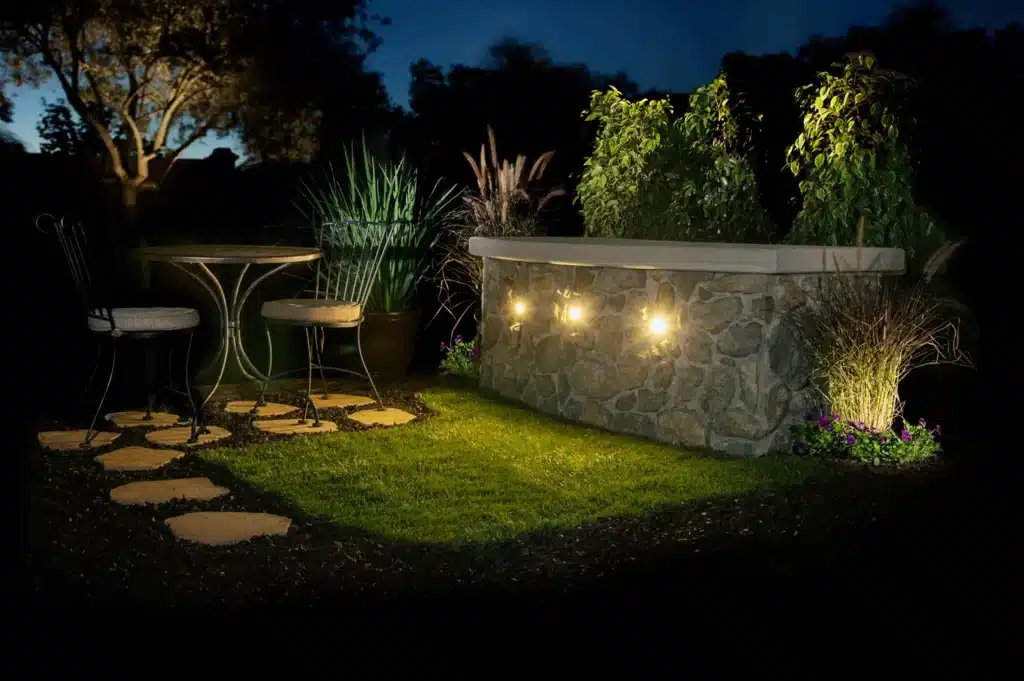
Your Home Deserves the Best Protection
Your home is your sanctuary, your largest investment, and your family’s safe harbor. Protecting it from the elements is a top priority for any responsible homeowner. By choosing high-quality, genuinely weather resistant landscape lighting and insisting on professional installation standards, you can dramatically enhance your home’s beauty, safety, and security, creating a welcoming ambiance that endures even in the face of a hurricane. This investment pays dividends in peace of mind, lasting value, and the simple joy of a beautifully illuminated home you can be proud of, no matter the weather.
Ready to upgrade to a landscape lighting system that’s truly built to last? Explore our gallery of premium lighting solutions and connect with a Tru-Scapes professional installer today to design the perfect storm-proof outdoor lighting for your beautiful home.

